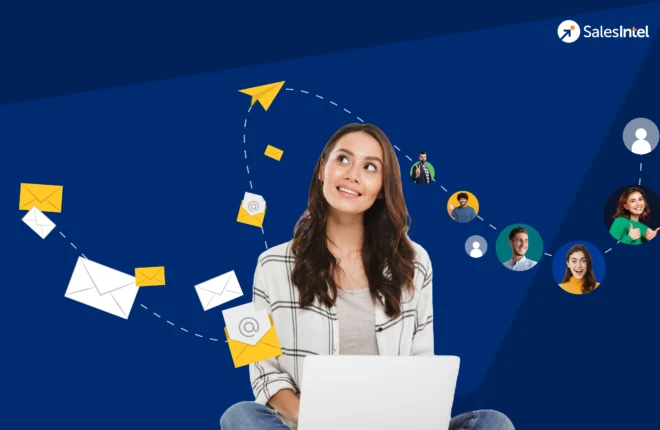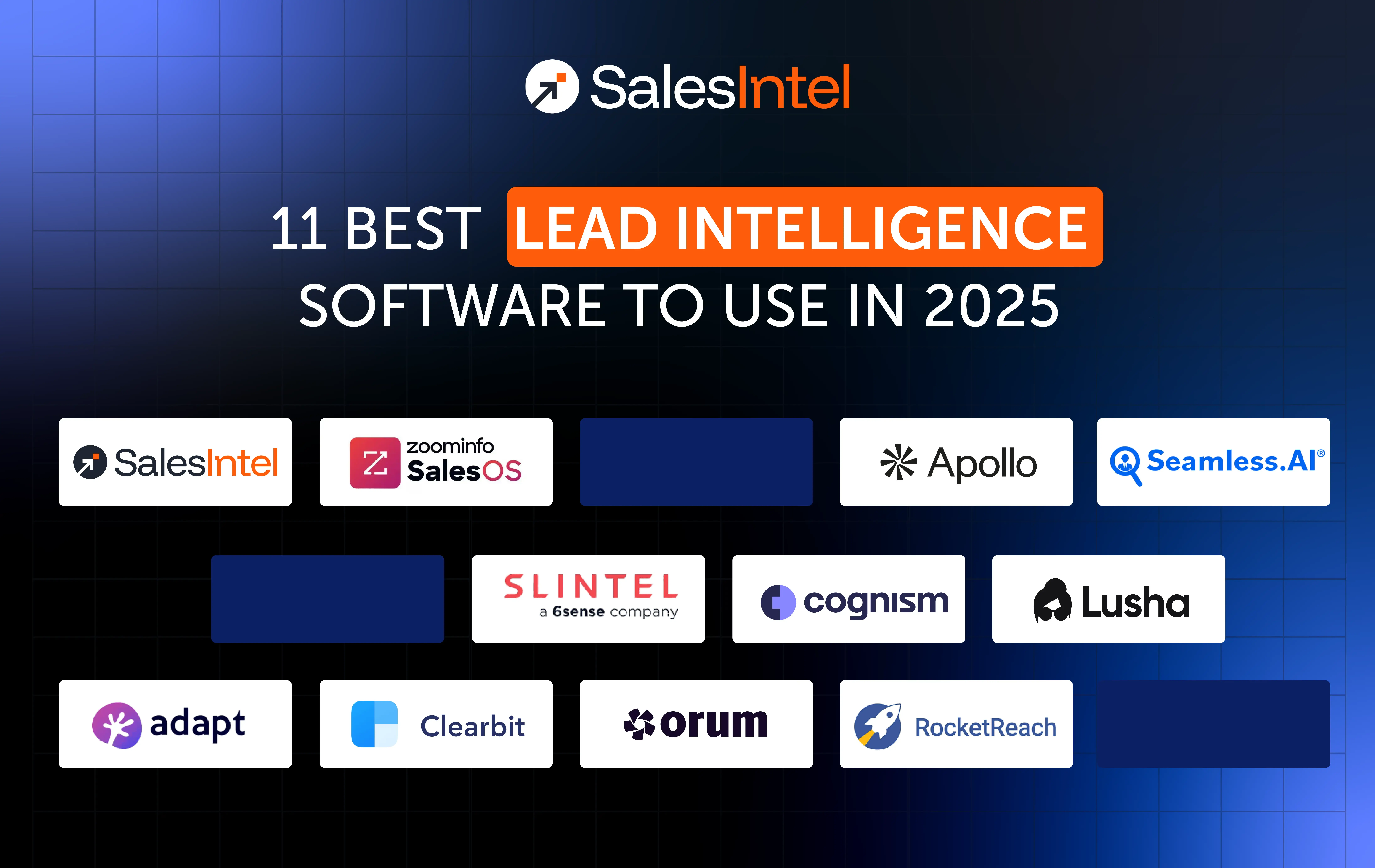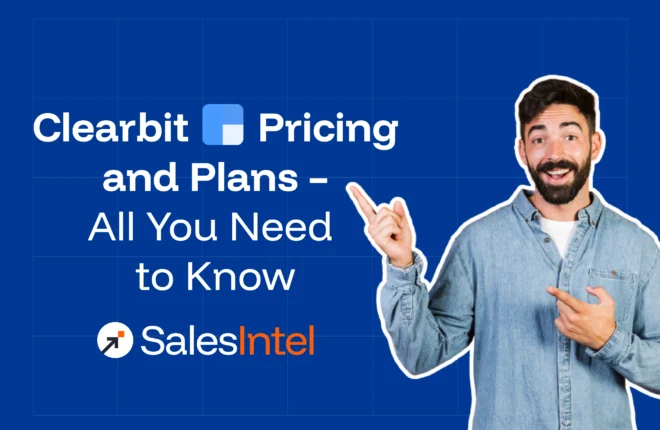Crafting an effective email cadence is essential to maintaining engagement and guiding prospects through the sales funnel. Whether you are nurturing leads, onboarding new customers, or re-engaging with inactive contacts, a well-planned email sequence ensures your messages are delivered at the right time with the right content.
In this guide, we’ll cover what email cadence is, the importance of timing and data, types of cadences for various use cases, and actionable tips to build a cadence that drives better conversions.
What is Email Cadence?
Email cadence refers to the sequence, timing, and frequency of emails sent to prospects or customers to achieve a specific outcome, such as generating leads, closing deals, or increasing retention. A well-thought-out cadence helps prevent overcommunication or under communication —both of which can reduce your chances of conversion.
- Too frequent emails: Irritate recipients, leading to unsubscribes.
- Too few emails: Causes prospects to lose interest or forget about your product/service.
- The right cadence: Balances communication by delivering value consistently without overwhelming the recipient.
Why Is Email Cadence Critical for Conversions?
An optimized email cadence is more than just sending follow-up emails. It builds trust, maintains top-of-mind awareness, and delivers the right content at the right moment in the buyer’s journey. Here’s how it contributes to better conversions:
- Improves engagement: Prospects stay engaged throughout the journey with strategically timed messages.
- Builds trust and credibility: Consistent emails help build relationships with leads.
- Prevents lost opportunities: Follow-ups ensure prospects don’t slip through the cracks.
- Encourages action: Time-sensitive emails, such as reminders and offers, prompt prospects to act faster.
Types of Email Cadences
The ideal email cadence varies depending on your goal and audience. Below are the common types of email cadences and when to use them.
1. Sales Cadence
This cadence is designed to convert leads into customers by nurturing prospects through personalized communication. It typically includes follow-ups after meetings, demos, or inquiries.
Example Sales Cadence:
- Day 1: Introduction email – Introduce yourself and your offering.
- Day 3: Follow-up email – Share a case study or value proposition.
- Day 7: Reminder email – Offer a time-sensitive incentive.
- Day 10: Final follow-up – Check in and ask if the lead needs more information.
Pro Tip: Use automation tools (like SalesIntel, HubSpot, or Mailchimp) to streamline follow-ups and track engagement.
2. Welcome Cadence
A welcome cadence is designed to introduce new customers or subscribers to your brand and set the tone for future communication. The goal is to build engagement early and help them explore your product or service.
Example Welcome Cadence:
- Email 1 (Instant): Welcome and thank them for signing up.
- Email 2 (Day 2-3): Share a quick-start guide or key features.
- Email 3 (Day 5-7): Highlight customer testimonials or success stories.
- Email 4 (Day 10): Send a discount code or special offer.
Pro Tip: Make the first email personal and engaging to leave a strong first impression.
3. Lead Nurturing Cadence
This cadence is used to warm up leads who aren’t ready to buy yet but have shown interest. The focus is on educating the lead and staying relevant until they move further down the funnel.
Example Lead Nurturing Cadence:
- Week 1: Educational content – Share a blog or webinar relevant to their needs.
- Week 2: Case study – Show how other customers solved similar challenges.
- Week 3: Soft sales pitch – Introduce your product with a demo invite.
- Week 4: Follow-up email – Ask if they have any questions and offer additional resources.
Pro Tip: Use intent data tools to identify when a lead is ready to move to the next stage.
4. Re-engagement Cadence
Re-engagement cadences are designed to win back inactive leads or customers by reminding them of the value your product offers. This is useful when contacts have stopped interacting with your emails.
Example Re-engagement Cadence:
- Email 1 (Initial): Remind the lead of your product/service and ask if they need any help.
- Email 2 (3-5 days later): Offer a discount or incentive.
- Email 3 (7-10 days later): Highlight a recent update or feature that might interest them.
- Email 4 (Final): Inform them about unsubscribing if they’re no longer interested.
Pro Tip: Use engaging subject lines to capture attention, such as “We Miss You!” or “Is There Anything We Can Help With?”
The Role of Quality and Comprehensive Data in Setting an Effective Email Cadence
In crafting a high-performing email cadence, data is not just an element—it is the foundation that drives precision, relevance, and ultimately, conversions. A cadence built without high-quality data is akin to navigating without a map; it risks sending irrelevant messages to the wrong recipients, which can lead to poor engagement, unsubscribes, and lost opportunities. Comprehensive data—such as intent, firmographic, technographic, and engagement metrics—enables a strategic and personalized approach, ensuring that every email adds value at the right time.
Intent Data: Knowing When Your Prospect is Ready
Intent data highlights prospective buyers’ interest in specific products or services by tracking behaviors like searches, content downloads, and website visits. Integrating intent signals into your cadence allows you to:
- Identify leads actively looking for solutions in your niche.
- Trigger personalized outreach at the moment when their interest is highest.
- Prioritize leads for immediate follow-ups, accelerating the sales process.
For example, a lead who downloads a whitepaper on your service should enter a different cadence than a contact who hasn’t shown any interest recently.
Firmographic Data: Targeting the Right Accounts
Firmographic data provides insights into company-specific characteristics such as industry, size, revenue, and location. This data ensures that your cadence is relevant by:
- Allowing segmentation by industry-specific pain points.
- Sending messages that align with the recipient’s business scale and region.
- Customizing CTAs (e.g., “Book a Demo for SMBs” or “Explore Enterprise Solutions”).
With firmographic segmentation, you can create cadences tailored to resonate with businesses based on their specific needs, improving engagement and conversions.
Technographic Data: Aligning Your Message with Tech Stacks
Technographic data identifies the software and tools a company uses. By knowing your prospect’s tech stack, you can position your product or service more effectively in your cadence. For instance, if a company uses HubSpot CRM, you could highlight your solution’s integration with HubSpot to pique interest.
Mobile Dials: Making Your Cadence Multichannel
Including mobile numbers in your dataset enables multichannel outreach by incorporating phone calls within your cadence. A follow-up call at the right time can reinforce the message in your emails, driving higher engagement.
Data from Cadence Performance: Continuous Improvement
The insights you gain from each email cadence—like open rates, CTR, bounce rates, and conversions—are invaluable for optimization. Analyzing these metrics allows you to:
- Adjust the timing and frequency of future emails.
- Refine subject lines and CTAs based on what resonates.
- Update segments dynamically based on recipient behavior (e.g., moving inactive leads into re-engagement cadences).
Quality data is the engine that powers a successful email cadence. Intent, firmographic, technographic, and mobile data ensure that your emails are relevant, personalized, and timely. Meanwhile, the insights from each cadence’s performance provide the feedback loop necessary for continuous improvement. By leveraging comprehensive data at every stage, you ensure that your cadence remains focused, relevant, and conversion-driven—setting the stage for better engagement and long-term business growth.
How to Create an Effective Email Cadence: A Step-by-Step Approach
Developing a high-converting email cadence requires a strategic approach that aligns with your business goals, audience behavior, and marketing objectives. This section offers a detailed breakdown of the process so you can build a cadence that nurtures leads, drives conversions, and enhances engagement at every stage.
Step 1: Set Clear Goals
Your email cadence should have a defined purpose. Without clear goals, you risk sending irrelevant emails, which can cause disengagement and increase unsubscribe rates. Here are some typical goals to consider:
- Generate leads: Attract and nurture prospects by offering relevant content, such as whitepapers, webinars, or free trials.
- Convert prospects into customers: Move leads further down the funnel with personalized emails highlighting product benefits, case studies, and limited-time offers.
- Re-engage inactive contacts: Reach out to dormant customers or leads with exclusive offers, updates, or surveys to bring them back.
By defining your objective, you can tailor your cadence to align with the specific needs of your audience at different stages in the funnel. For example, a lead generation cadence will focus more on education, while a conversion cadence may highlight benefits and CTAs to drive purchase decisions.
Step 2: Segment Your Audience
Segmentation ensures that your emails are relevant and personalized—two key factors in driving engagement. Not all recipients are at the same stage in the buyer’s journey, so targeted communication improves the chances of conversion.
Here are key segmentation criteria:
- Lead Status:
- MQL (Marketing Qualified Lead): Interested but not yet ready to buy.
- SQL (Sales Qualified Lead): Evaluating options and closer to making a purchase.
- Inactive: Leads or customers who haven’t engaged in a while.
- Purchase Behavior:
- New customers: Send welcome cadences with onboarding resources.
- Recurring customers: Offer cross-sell or upsell recommendations.
- Inactive customers: Send win-back emails with special discounts.
- Engagement Level:
- High engagement (frequent opens and clicks): Send exclusive offers or personalized invites.
- Low engagement (few opens or clicks): Reassess email frequency and content relevance.
Pro Tip: Use automation tools to segment contacts based on real-time data, ensuring your cadence is relevant and personalized.
Step 3: Choose the Right Timing and Frequency
Sending emails at the wrong time or too frequently can harm engagement. The key is to identify when your audience is most receptive and strike the right balance between too many and too few emails.
- Timing:
- B2B emails: Perform best on Tuesday mornings or mid-week (Tuesday to Thursday).
- B2C emails: May see better engagement over weekends or in the evening when consumers are less busy.
- Frequency:
- Avoid overwhelming recipients by spacing emails at intervals of 2-3 days.
- Consider sending 5-8 emails per cadence, depending on the sales cycle or goal.
Pro Tip: Review your email analytics to determine the best days and times for your audience.
Step 4: Craft Compelling Subject Lines and Content
Subject lines are critical—if they don’t capture attention, recipients won’t open the email. Once opened, your content must be concise, valuable, and actionable to keep readers engaged.
- Subject Line Best Practices:
- Make it short and intriguing (under 50 characters).
- Use numbers, questions, or urgency to grab attention.
- Example: “Don’t Miss This Exclusive Offer Just for You!”
- Content Best Practices:
- Keep the message clear and relevant—focus on what’s valuable to the recipient.
- Use a conversational tone to build rapport.
- Include a clear CTA (Call-to-Action): Direct the recipient to take action, such as “Sign up for a free demo today” or “Claim your discount.”
- Use visual elements (like images or icons) to make the email more engaging
Pro Tip: Personalize emails with the recipient’s name or company to increase engagement. For example, “Hi [First Name], have you seen our latest product?”
Step 5: Automate Your Email Cadence
Email automation ensures timely follow-ups and enables you to nurture leads without manual effort. Automation tools like Mailchimp, HubSpot, or ActiveCampaign allow you to:
- Schedule emails based on triggers (e.g., new subscriber, download, or purchase).
- Track performance in real-time (e.g., open rates, click-through rates).
- Segment contacts dynamically based on behavior (e.g., move a lead to the next stage if they open a certain number of emails).
Pro Tip: Use drip campaigns to automate lead nurturing, sending a sequence of pre-written emails triggered by specific actions.
Step 6: Monitor Performance and Optimize Your Cadence
Once your email cadence is live, it’s essential to track key metrics to ensure it’s driving the desired results. Use the following metrics to measure success:
- Open Rate: Percentage of recipients who open your email. Low open rates could indicate weak subject lines or poor timing.
- Click-Through Rate (CTR): Measures the percentage of recipients who clicked on a link in your email. A low CTR suggests your content or CTA needs improvement.
- Conversion Rate: Tracks how many recipients completed the desired action (e.g., signed up for a demo or made a purchase).
- Unsubscribe Rate: Shows how many recipients opted out of your emails. High unsubscribe rates could indicate overly frequent emails or irrelevant content.
Optimize your cadence by:
- A/B Testing: Experiment with different subject lines, send times, CTAs, and email content to find what resonates best.
- Analyzing Drop-Off Points: Identify where recipients stop engaging and adjust your cadence accordingly.
- Refining Segmentation: Update your audience segments to reflect changes in behavior or engagement.
The Data Blueprint: Building an Unstoppable Email Cadence
An effective email cadence is the backbone of a successful email marketing strategy, helping you nurture leads, build relationships, and drive conversions. By segmenting your audience, setting clear goals, crafting engaging content, and automating follow-ups, you can deliver consistent value to your prospects without overwhelming them. With regular tracking and optimization, you’ll be able to refine your cadence over time, ensuring better engagement and higher conversion rates. Whether you’re running sales campaigns, onboarding customers, or re-engaging inactive contacts, the right cadence can make all the difference.



![10+ Sales Pipeline Management Tools [+Tips]@4x](https://salesintel.io/wp-content/uploads/2025/09/10-Sales-Pipeline-Management-Tools-Tips@4x.webp)
